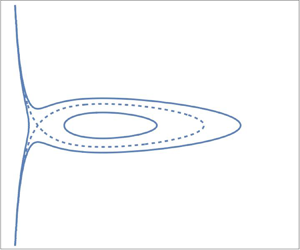Article contents
Lagrangian approach to nonlinear waves in non-dispersive and dispersive rotating shallow water magnetohydrodynamics
Published online by Cambridge University Press: 22 March 2024
Abstract

A Lagrangian approach to both hydrostatic non-dispersive in the short-wave range and non-hydrostatic dispersive rotating shallow-water magnetohydrodynamics is developed, and used to analyse weakly and fully nonlinear waves described by the model. Hyperbolic structure in the non-dispersive case is displayed and Riemann invariants are constructed. Characteristic equations are used to establish criteria of breaking and formation of shocks by magneto-gravity waves, and conditions of the appearance of contact discontinuities in Alfvén waves. As in the case of non-magnetic rotating shallow water, rotation cannot prevent breaking. The Lagrangian equations of the model are reduced to a single partial differential ‘master’ equation, which is used to analyse the propagation of weakly nonlinear waves of both families, with or without weak rotation, and with or without weak short-wave dispersion. Corresponding modulation equations are constructed and their main properties sketched. The same master equation is used to obtain fully nonlinear finite-amplitude wave solutions in particular cases of no short-wave dispersion or no rotation.
Information
- Type
- JFM Papers
- Information
- Copyright
- © The Author(s), 2024. Published by Cambridge University Press
References
- 2
- Cited by


